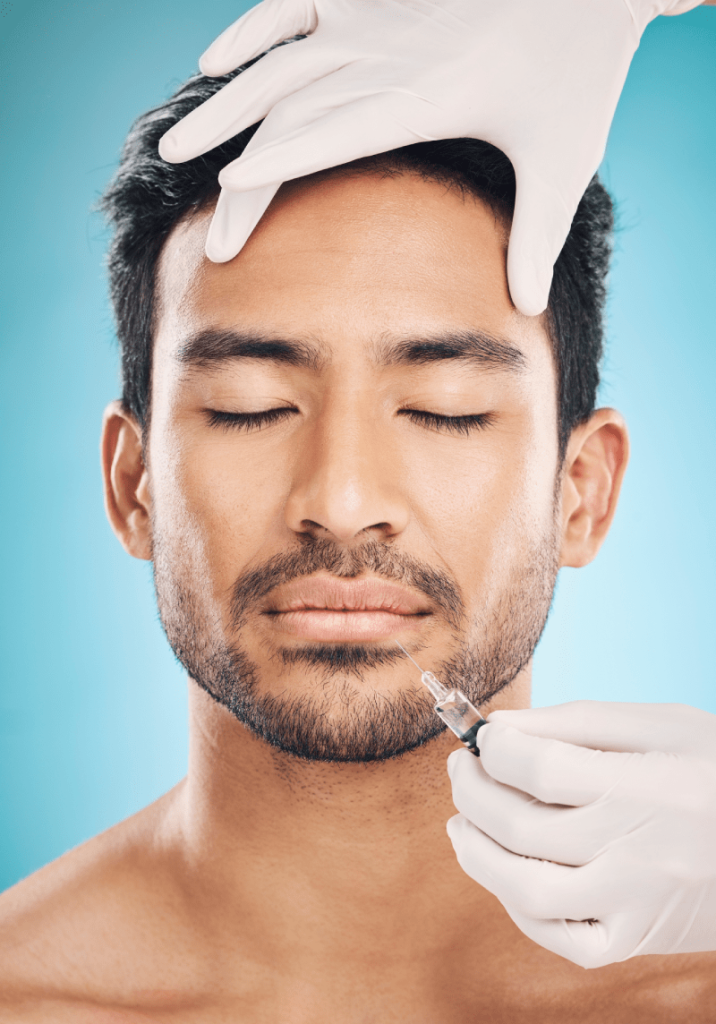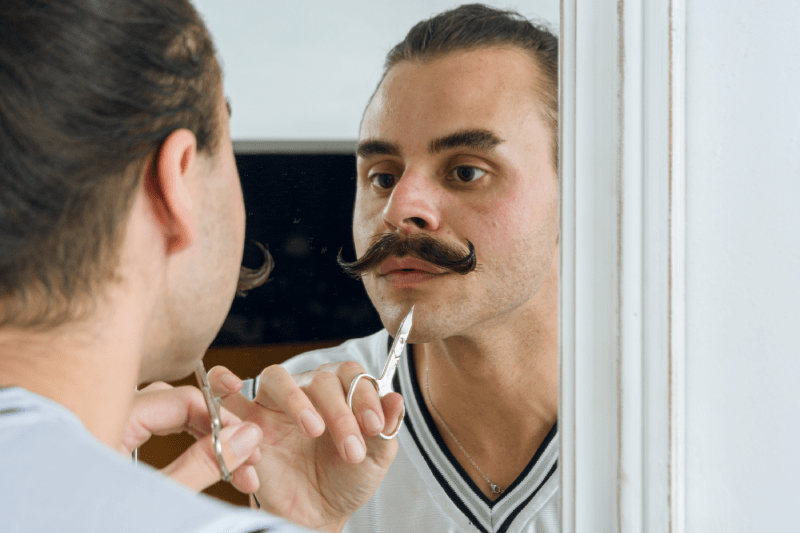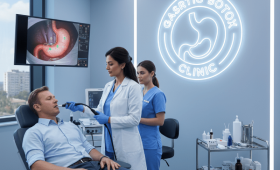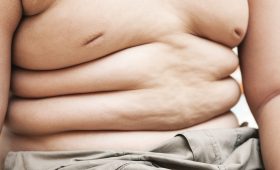What is a Beard and Moustache Transplant?
Beard and moustache transplantation is the transfer of hair follicles (grafts) from other parts of the body to sparse, patchy, or bare areas of the face. The roots, typically harvested from donor areas like the back of the neck or under the chin, are transplanted in a way that matches the natural direction and density of the beard.
The goal of this procedure is to give the individual a fuller, more aesthetic, and masculine appearance. Thanks to modern techniques, the transplanted beard hairs look completely natural and can be shaved. This is a non-surgical aesthetic procedure, usually performed under local anesthesia while the patient is awake, and takes several hours. It is an aesthetic operation with a high success rate.
Why Should I Get a Beard and Moustache Transplant?
Beard and moustache transplantation offers both aesthetic and psychological benefits for many men. It is a permanent solution for individuals who have patchy or sparse beards due to genetic predisposition, hormonal imbalances, or scars. A full and dense beard boosts self-confidence and makes a person feel better about themselves. As the popularity of beard fashion increases, more men are turning to this method to achieve a denser and more regular beard. It is also an effective method for covering scars caused by burns or accidents. A beard that suits a person’s facial features can create a more symmetrical and attractive profile.
Who is a Good Candidate for Beard Transplantation?
Beard transplant surgery is primarily suitable for men over 20 who are in good general health and are experiencing thinning or hair loss in their beard. One of the most important criteria is having a sufficient and good-quality donor area for the transplant. The hair follicles from the nape of the neck are usually preferred because they are the most similar in structure to beard follicles.
Individuals with hormonal imbalances or autoimmune diseases should first address these issues. Furthermore, this procedure may not be suitable for people who do not have a sufficient density of hair follicles in their donor area. A professional evaluation will definitively determine whether a person is suitable for the procedure.
Preparation for the Transplant
There are several important points to consider before the operation. You should stop consuming alcohol, cigarettes, and blood-thinning medications at least one week before the procedure. These substances can negatively affect the healing process and increase the risk of bleeding. If you take any regular medication, you must inform the specialist who will perform the operation.
It is also important to get a good night’s sleep before the procedure and wear comfortable clothes on the day of the operation. Limiting caffeine intake before the operation is also recommended, as it can raise blood pressure. Starting the operation with a clean skin also reduces the risk of infection.
Beard Transplant with the FUE Method
The Follicular Unit Extraction (FUE) method is one of the most widely used techniques for beard transplantation, just as it is for hair transplantation. In this method, individual hair follicles harvested from the donor area are transplanted into small channels opened in the beard area. FUE does not require surgical incisions or stitches, so the healing process is faster and the possibility of scarring is minimal.
This technique is especially suitable for larger beard areas and helps to achieve a natural look. The small scabs that form after the operation fall off on their own within a few days. Another advantage of FUE is that the hair is harvested in a scattered manner from the donor area, preserving the aesthetic integrity of the region.
Beard Transplant with the DHI Method
Unlike FUE, the Direct Hair Implantation (DHI) method involves placing hair roots directly into the transplant area using a special pen (Choi Implanter Pen). In this technique, the root harvesting and channel opening procedures are performed almost simultaneously. The DHI method provides a faster procedure because it eliminates the channel opening stage.
In addition, this technique allows for a denser transplant and reduces the risk of damage to existing beard roots. DHI is ideal for thinning in small and sensitive areas (such as the moustache). Because it provides a more controlled transplant, the angle and direction of the roots can be adjusted more precisely.
Which Method is More Suitable for Me?
Each of the FUE and DHI methods has its own advantages, and which method is more suitable for you depends on your personal needs and expectations. If you want fullness in a larger area or have a limited budget, the FUE method is generally a good option. If you desire a higher density transplant in more sensitive areas or want a faster healing process, the DHI method may be more suitable. Expert consultation will help you make the right decision by evaluating your specific needs and expectations. This evaluation will consider both the condition of your donor area and the beard shape you desire.
Stages of a Beard and Moustache Transplant Operation
The operation usually consists of three main stages. First, the donor area is determined and shaved. Local anesthesia is applied, and the area is numbed. In the second stage, graft harvesting, hair follicles are collected one by one using the chosen technique (FUE or DHI). These grafts are then prepared for transplantation. In the third and final stage, small channels are opened in the area to be transplanted, or the DHI pen is used for direct implantation. The transplant is completed with meticulous attention to the natural direction, angle, and density of the hair roots. The duration of the operation varies depending on the number of grafts to be transplanted, but it usually takes between 4 and 8 hours.

Donor Area Selection and Its Importance
The donor area is the region from which hair follicles will be harvested for the beard transplant. The hair from the nape of the neck is usually preferred because the hair roots in this area are genetically resistant to hair loss and are the most similar in structure to beard tissue. Sometimes, body hair from under the chin or the chest can also be used as a donor, but this is a secondary option.
The selection of the donor area is vital for the success of the operation. Harvesting a sufficient number of healthy grafts ensures that the transplant yields natural and lasting results. The specialist evaluates the density of the donor area, the quality of the hair follicles, and their overall health to determine the most suitable area.
What is a Graft and How is the Number of Grafts Determined?
A graft is a small piece of tissue containing one or more hair follicles. In a beard transplant operation, the number of grafts needed is determined by the size of the area to be transplanted and the desired density. For example, a few hundred grafts may be sufficient for a moustache, while more than 2,000 grafts may be needed for a full beard.
The number of grafts is determined by the specialist during a physical examination before the operation. This number is based on the patient’s expectations and the capacity of the donor area. Determining the correct number of grafts is a critical step to both achieve a natural look and to avoid damaging the donor area.
Tips for a Natural Look
The success of a beard transplant depends not only on the health of the transplanted grafts but also on the artistic aspect of the transplant procedure. To achieve a natural look, the direction, angle, and density of the hair follicles must be adjusted with great care. Beard follicles should be transplanted at an angle of approximately 30 degrees on the cheeks and 35 degrees on the moustache and under the chin. These angles mimic the natural direction in which the beard grows. Also, transplanting each beard root individually, unlike hair transplantation, provides a more natural density in the beard. The experience and aesthetic sense of the specialist directly affect the naturalness of the final result.
Pain and Anesthesia Process
Since the beard transplant operation is performed under local anesthesia, the patient does not feel any pain during the procedure. The anesthesia may cause a brief, temporary stinging sensation only when applied with a needle. In some centers, needle-free anesthesia devices can also be used, which completely eliminates the sensation of pain. Since the patient is awake during the procedure, they can listen to music, read a book, or chat. After the operation, a slight pain or soreness may be felt, but this can usually be controlled with simple painkillers. The pain usually disappears on its own within a few days.
First 24 Hours After the Operation
After the operation is completed, a slight redness and swelling in the transplanted area is normal. Within the first 24 hours, the transplant area should not come into contact with water or any chemicals. The patient should sleep with their head elevated and avoid hard pillows. This helps to minimize swelling. A slight soreness or discomfort may also be felt in the donor area, which is also normal. Special lotions or sprays provided after the procedure can be used to keep the area moisturized during the first few days. To prevent any risk of infection, the doctor’s instructions must be followed to the letter.
First 10 Days and the Scabbing Process
Within 2-3 days after the operation, small, red spots and scabs will begin to form in the transplant area. This is a natural part of the healing process and is not a cause for concern. The first wash is usually performed by a specialized team 24-48 hours after the operation. Afterwards, the patient continues to gently wash the transplant area as instructed by the specialists. This washing process helps the scabs to gradually fall off. Within 10 days, all the scabs have usually fallen off and the transplanted area has a more natural appearance. It may be itchy during this period, but the transplant area should not be touched.
Important Considerations During the Healing Process
The post-operative healing process is vital for the success of the outcome. For the first few weeks, heavy exercise, direct sunlight, and excessive sweating should be avoided. Lying on your stomach is absolutely forbidden, and the transplant area must be protected from physical impact. During this process, stopping smoking and alcohol consumption will help the hair follicles to be better nourished. Eating healthy and drinking plenty of water helps the body to repair itself. Vitamin supplements or lotions recommended by the doctor should be used regularly. These simple precautions increase the longevity of the transplant.
Shock Loss and the Growth of Real Beards
Approximately 2-4 weeks after the beard transplant, a process called “shock loss” may occur. During this period, most of the transplanted hairs fall out. This is nothing to worry about, as it is the hair itself that is falling out, while the roots remain intact. Shock loss is part of the process of the hair follicles adapting to their new location. After this shedding, new beard hairs will begin to grow slowly within about 3 months. With each passing month, the thickness and density of the beard will increase. It is important to be patient at this stage and wait for the results to fully emerge.
Full Recovery and Final Results
The final results of the beard transplant begin to become visible approximately 6 months after the operation. By the end of one year, all of the transplanted beard hairs will have grown and reached their full thickness. At this stage, the beard looks completely natural, can be shaved, and styled. The full and dense beard look that was imagined before the operation has now been permanently achieved. With this new look, the patient regains their self-confidence and their facial features become more prominent. These permanent results are the most important feature that distinguishes beard transplantation from other temporary methods.
What Factors Influence Beard and Moustache Transplant Prices?
The prices for beard and moustache transplantation vary depending on many factors. The number of grafts is the most decisive factor; as the number of roots needed increases, so does the cost. The technique used (FUE or DHI) also affects the price of the operation. The DHI method, which requires more specialized tools and greater precision, can generally be more expensive than FUE. The experience and reputation of the clinic or specialist performing the procedure also play an important role in pricing. The scope of services included in the price (accommodation, transfers, medications, etc.) is another factor that affects the total cost.
Price and Quality Balance
The cheapest price is not always the best option. While a beard transplant is not a surgical procedure, it is an aesthetic and medical operation. A poor-quality transplant can lead to an unnatural appearance, scarring, and permanent damage. Therefore, when researching prices, it is necessary to pay attention to the experience of the clinic or specialist, the technology they use, and patient references. A high-quality operation yields better results in the long run and eliminates the need for potential revision costs. It should be remembered that the quality of this new look you will wear on your face is more important than the price you pay.

Why Should I Consider Getting a Transplant Abroad?
Overseas options for beard and moustache transplantation have become quite popular, especially in destinations that offer high-quality services at more affordable prices. Some countries are home to a large number of clinics specializing in this field, and both the cost of the operation and the cost of living are lower. This also allows patients to combine the operation with a holiday. These centers, known for providing high standards of service and a patient-oriented approach, offer comprehensive packages that include not only the operation but also all the details such as accommodation and transportation. This minimizes the stress of the operation for patients.
Package Contents and Their Advantages
The packages offered for beard transplantation usually include not only the operation but also other important services. These services include airport transfers, post-operative accommodation, all medical medications, special shampoos and lotions, translation services, and post-operative follow-up sessions. These packages provide great convenience, especially for patients coming from abroad. The fact that all logistical details are handled by an organization allows patients to focus solely on their recovery process. This makes the treatment process more comfortable and stress-free.
Watch Out for Hidden Costs!
When researching prices, it is very important to clarify exactly what the package covers. Some centers may attract patients by offering a low starting price, but this price may not include essential services such as transfers, accommodation, or medications. This can lead to unexpected additional costs at the end of the operation. When getting a price, be sure to ask if it is an “all-inclusive” package and read your contract carefully. A reputable institution will clearly state all costs upfront and have a transparent pricing policy.
Choosing the Right Center and Specialist
Choosing the right center and specialist for your beard transplant is one of the most critical steps for the success of the operation. When making this choice, check whether the center has international accreditations and examine the experience and references of the team that will perform the operation. Seeing before and after photos of the specialist’s previous operations will give you an idea of their aesthetic sense. A good center offers a consultancy service that will answer all your questions and be transparent at every stage of the process.
Patient Reviews and Before/After Photos
The best idea about a potential center can be obtained by reading reviews from previous patients and seeing their results. Social media platforms, forums, and websites with patient stories can help you with this. Before and after photos of successful operations are the most concrete evidence of the center’s quality and the specialists’ abilities. However, it is important to be careful to ensure that the photos are real and do not contain photo manipulation. A reliable center will share patient references and success stories with transparency.
Transportation and Accommodation Conveniences
If you are considering having a procedure done abroad, transportation and accommodation conveniences are of great importance. Special packages for most international patients include airport pick-up and hotel transfers. A comfortable and hygienic place to stay is vital for rest and recovery after the operation. An institution that manages such arrangements professionally will prevent patients from having to deal with all the travel and accommodation stress. These details will make your overall experience more pleasant and trouble-free.
Patient Support and Communication
A beard transplant is not a process that ends on the day of the operation. Communication between the patient and the center should continue throughout the post-operative recovery period and the one year it takes for the results to fully emerge. A good institution offers a 24/7 support line for its patients and responds quickly to possible questions or concerns. Being able to communicate in their own language is a great relief for patients coming from abroad. Post-operative check-ups and virtual follow-ups are very important to ensure that the process is completed successfully.
Additional Services and Possible Side Effects
Some centers may offer additional services such as PRP therapy in addition to the beard transplant operation. PRP can help the transplanted roots to strengthen and grow faster. Known side effects of the operation include mild swelling, redness, and temporary itching. However, these effects usually disappear in a short time. The risk of infection is very low but can occur if hygiene rules are not followed. Getting information in advance about possible side effects and how to deal with them will prepare you for any surprises.
How Should I Determine My Style After a Beard Transplant?
After your beard transplant, you can start styling your new beard once it has fully grown. Your beard style should be suitable for your face shape and personal taste. Longer beards are suitable for those with round faces, while almost any style can be suitable for those with oval faces. Specialists can help you determine the most suitable beard shape by examining your facial features before the operation. To best showcase your new beard, it is important to maintain it regularly and use products such as beard shampoo and oil.
Meet Cure Holiday: For a Seamless Process
If you are looking for a high-quality and affordable beard transplant and a comprehensive experience where all the details are taken care of for you, the “Cure Holiday” concept is perfect for you. This concept combines your transplant operation with health tourism, offering you both an excellent result and a comfortable trip. Everything from pre-operative consultation to airport transfers, from comfortable accommodation to post-operative follow-up, is included in one package. In this way, you are completely free from the stress of traveling abroad and dealing with the logistical details of the operation. With “Cure Holiday,” achieving your dream look is now a much easier and more enjoyable process.
Conclusion: Achieve Your Dream Look
Beard and moustache transplantation is one of the most permanent and effective ways to fill in the gaps on your face and give you a fuller and more aesthetic appearance. Making the right choice on this journey is vital to achieve natural and satisfying results. Taking the balance of price and quality into account and working with a specialized and experienced team is the most important part of this decision. Thanks to advanced techniques and patient-oriented services, it is possible to turn this process into a comfortable and stress-free experience. Remember, with the right guidance, achieving the look you desire is just one step away.



